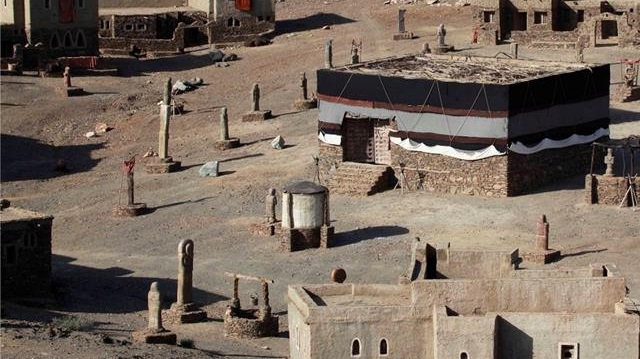History of the Kaaba


Tabii kanka, verdiğin metni İngilizce’ye çevirip biraz akıcı ve anlaşılır hale getirdim:
Kaaba:
The word "Kaaba" means "the revered mosque." It is the first and holiest site in Islam. Today, it is the structure towards which Muslims direct their prayers (Qibla). Located in the city of Mecca, Saudi Arabia, the Kaaba is a cube-shaped building with four equal sides.
History of the Kaaba:
According to Islamic belief, the Kaaba was originally built by Prophet Adam (Hazrat Adem). After being sent down from Paradise, Adam and Eve (Hazrat Adem and Hazrat Havva) descended to the Arafat plain. When they reached the site where the Kaaba now stands, Adam prayed to Allah:
"O Allah, You have brought us to Earth. To be able to thank You, please gift us the pillar around which we used to circumambulate in Paradise."
Allah accepted this prayer and sent down the pillar to Earth. Adam and Eve then worshipped by circumambulating around this pillar. Over time, the pillar was lost, and in its place, a black stone remained. Later, Prophet Seth (Hazrat Şit) built a cube-shaped structure in place of the pillar, placing the black stone next to it. Today, this stone is known as the "Hajar al-Aswad" (Black Stone).
This structure was used as a place of worship until the time of Prophet Noah (Hazrat Nuh). During the Great Flood, the Kaaba was buried under sand. Many years later, Allah appointed Prophet Abraham (Hazrat İbrahim) and his son Prophet Ishmael (Hazrat İsmail) to dig through the sand and uncover the foundations of the building constructed by Seth. The Kaaba was rebuilt on these foundations and has stood to this day.
The Kaaba consists of nine main parts:
-
Hajar al-Aswad (Black Stone): Believed by Muslims to have come down from Paradise; it measures approximately 16.5 x 20 cm.
-
Kaaba Door: Located on the east side, about 2.13 meters above ground level.
-
Golden Gutter: Built by the Ottomans in 1627 to prevent rainwater accumulation on the roof.
-
Shadirvan (Marble Pavement): Marble flooring surrounding the Kaaba to protect it from rainwater damage.
-
Hatim: A semi-circular marble area on the west side of the Kaaba.
-
Multazam: The area between the Kaaba's door and the Black Stone.
-
Maqam Ibrahim (Station of Abraham): The footprint of Prophet Abraham left during the construction of the Kaaba.
-
Sitara and Kiswa: The black cloth with gold embroidery that covers the Kaaba.
-
Maqam Jibril (Station of Gabriel): A location near the eastern side of the Kaaba.
Throughout history, the Kaaba has undergone many changes. Before Islam, Arabs placed idols inside it and worshipped them for many years. After Islam, Prophet Muhammad (peace be upon him) destroyed these idols one by one. It is said that at that time, there were about 360 idols inside.
Today, the Kaaba is a sacred place visited by Muslims to perform the Hajj pilgrimage, circumambulate (Tawaf) around it, and it is considered part of the holy lands. It is believed to contain some sacred relics and is thought to radiate spiritual energy.
İstersen metni daha kısa, akademik ya da daha basit dille yeniden düzenleyebilirim.




